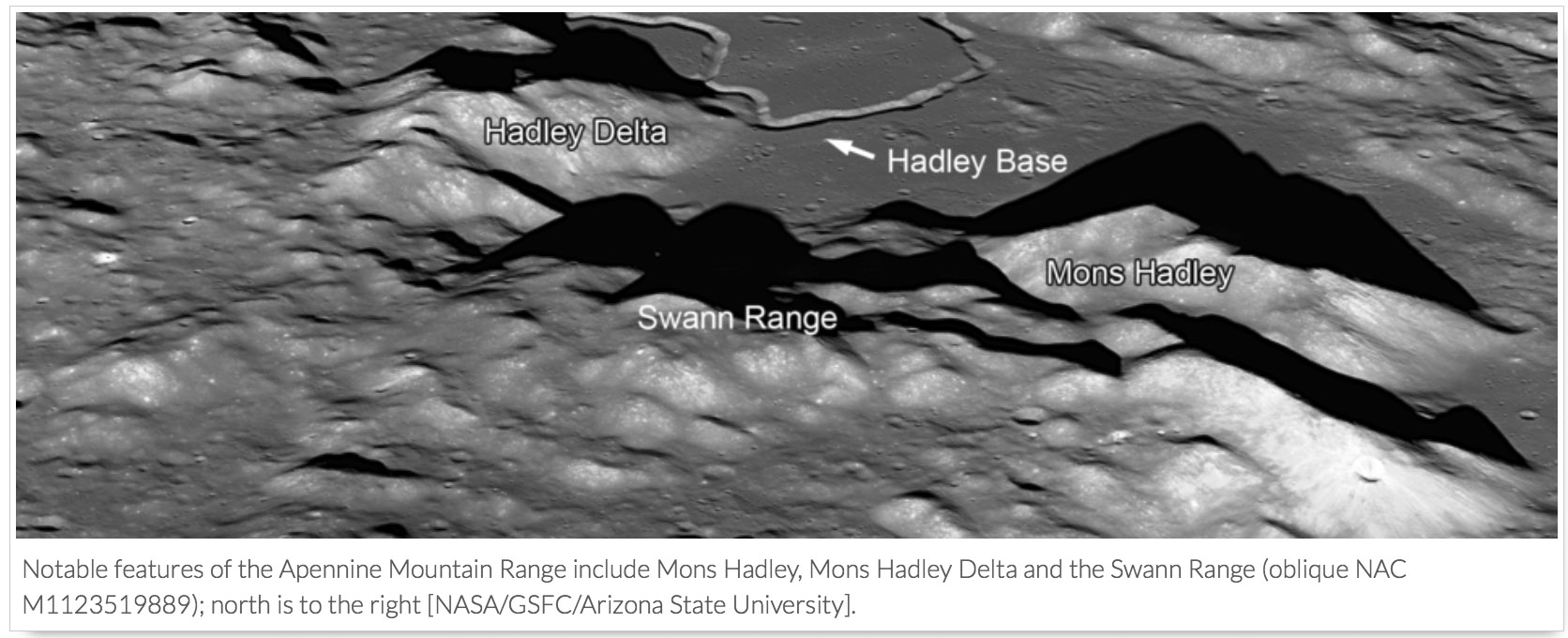June 19, 2014
Remembering Apollo 15 and Gordon Swann

image and caption from LROC Image-June 18, 2014 (NASA/GSFC/Arizona State University)
The Lunar Reconnaissance Orbiter Camera team has released this dramatic oblique view of the Apollo 15 site along with a color-coded topographic image map and a NAC closeup of Hadley Rille. Lunar scientists will never get over the Apollo landings and in particular Apollo 15 because it was in the most dramatic scenery of all the missions. The lunar module Falcon came in at a steep angle (25° instead of the 14° of earlier missions) in order to clear the towering Apennines and drop down onto the surface near the rille. The surface data collection was very successful, partially because astronaut Dave Scott was very enthusiastic about geology and learned a lot before his mission. The nomenclature that the LROC team added to the image is a mixture of official and unofficial names. Mons Hadley and Mons Hadley Delta were approved by the International Astronomical Union in 1935, being based on well known classical names from Schröter and Mädler. Most mountains with Greek letter designations were dropped from the IAU nomenclature in the 1970s but Hadley Delta survived, perhaps because of its association with Apollo 15. Swann Range was an astronaut-given name, one of about 80 for Apollo 15, that was ultimately not accepted as official by the IAU. Hadley Base is an unofficial unofficial name. I use the double unofficial because it isn't an IAU approved name and it wasn't used by Apollo astronauts. In fact, the Apollo 15 landing site has no official name, so both Hadley Base and Apollo 15 Landing Site are reasonable, but unofficial, ways to refer to it. Swann Range was named for Gordon Swann, a US Geological Survey geologist who led the field training for the Apollo 13, 14 and 15 astronauts. Swann died just a few days ago; Paul Spudis has written a remembrance that includes how Swann helped develop field geology methods that could be conducted inside a space suit. Its not just the Apollo astronauts who are dying, so are the engineers and scientists who made the program successful.
Chuck Wood
Related Links
21st Century Atlas chart 11.
Yesterday's LPOD: The Truth
Tomorrow's LPOD: New Light On the Basin Near Schiller
COMMENTS?
Register, Log in, and join in the comments.



